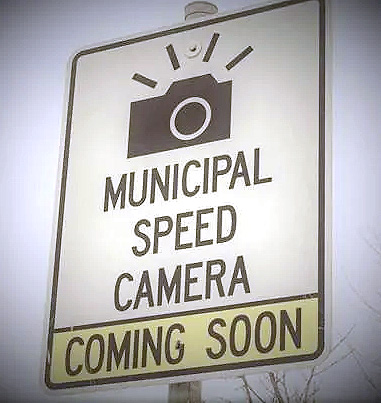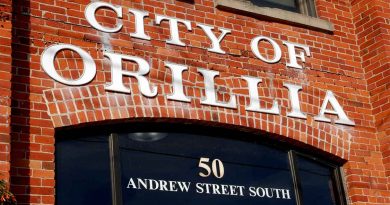2024 Capital Budget Preview
By John Swartz
Orillia City Council resumes budget deliberations Tuesday November 14 and will conclude them on the 15th. The focus is the capital budget.
The overall budget for capital projects is $70 million – that’s how much will be spent according to plan in 2024. Most of that funding comes from other sources (such as development charges, grants from other levels of government, or reserves accumulated from prior year’s tax levies) than the current year tax levy. Only $2 million is traditionally charged against the current year tax levy.
The budget is arranged according to projects staff say have to be done (A list) and a short list of $400,000 worth of discretionary spending council will approve or deny during the next two days (B list). There also is a list of projects staff are not recommending and appear on the list usually as a heads up to future expenditures (C list).
The agenda also has some specific reports on items council must consider. Below is a rundown of what those reports are, and some selected items from the rest of the capital budget you might like to know about.
Climate Change
Following recommendations for the City’s Climate Change Action Plan a number of projects are proposed. Some of the big ticket items on the list are converting parking lot and park lighting to LED at $1.2 million; upgrading lighting at the library to LED at $250,000; and replacing water fixtures at Rotary Place to low flow ones at $130,000. These changes will result in energy cost savings which will increase over time. The total amount of expenditure being considered is $1.9 million.
Roads and Sidewalks
A separate report is included to answer to council enquries to look into costs for roadwork on Barrie Road from Walker Avenue to Mississaga Street, and an section or road which doesn’t have a name extending from Cedar Island Road to the Champlain Sailing Club.
The Barrie Road section was subsequently added to the 2023 list of roads for resurfacing and done this past summer. The other is a makeshift gravel road on top of the old CN and CP rail beds, which is used to get to 5 leased and occupied properties owned by the City, connect to Industrial Street, and the trail runs alongside it.
Staff say any work would require a full treatment as though the City was building a new road. They also say the Downtown Tomorrow plan outlines this road will eventually become an extension of Centennial Drive connecting through to Forest Avenue. Furthermore, what happens and the timing of anything also depends on development proposals for adjacent properties. Staff are recommending to receive, which means do nothing.
Another report relates to Centennial Drive just south of the gravel road above. This section of Centennial Drive, long overdue for completion, will have the final layer of asphalt put down in the spring. Staff in the meantime have noticed the road on Centennial up to the bridge to Cedar Island, which was not in prime shape to begin with, has deteriorated more because of construction activity and want council to allow them to change the construction specs to include this section of road which is not part of the original contract. They say the $75,000 cost can be included in the original budget as a change order and that the work can be completed by the same contractor (JB Enterprises) is doing the final layer of paving for the rest of the project.
Elsewhere in the budget documents relating to roads, the following streets are scheduled for resurfacing; Driftwood, Commerce, Marlisa, Hughes, Fergusson, Galley and Tecumseth (no mention of the almost impassible Neywash and Nottawasaga/Mary Streets (behind the library) street). Included is the cost of design work for resurfacing Line 15. $2 million is budgeted for all of this work.
The sidewalk replacement budget of $946,000 includes both sides of Coldwater Street from Front to West, two sections of Douglas Street, Mississaga Street from Frederick to Dunlop and O’Brien Street. Staff are swapping replacing Canice Street sidewalks (2024) and Toboggan Hill on the schedule (2034).
Staff want to hire a consultant to do road and sidewalk inspections at a cost of $200,000.
People who use Jarvis Street know this road is long over do for a makeover. It’s scheduled to happen in 2025 at a cost of $8.5 million. Staff have a budget request for $200,000 to do design work in 2024. Part of the design work is creating a construction plan. This is critical because the City’s primary water mains are under Jarvis Street and staff say it’s a high risk operation to replace them and there is a ‘significant risk’ of failure, so planning and execution have to be very clear and top notch.
Staff want $275,000 for design work to widen Old Barrie Road from University to Highway 11. That stretch of road was just constructed and staff say it needs to be widened to 4 lanes. It kind of makes councillor Lauer look clairvoyant for holding out to have University Avenue built to 5 lanes instead of 3.
A budget of $1.5 million is needed to start work on phase 3 and 4 of rebuilding Laclie Street. Those reconstructions aren’t going to happen until 2025, but moving hydro poles and doing ground studies needs to be done next year.
There is a budget request for new left hand turn signals at West and Fittons. The request doesn’t say for traffic on Fittons, but presumably it is that because West already has an advance green. Staff say this intersection will have higher traffic when the province rebuilds the Coldwater/ Highway 11 over pass it just rebuilt.
Driving And Walking Downtown
Staff have a budget item for $1.6 million for design work and hiring a person to oversee reconstruction of downtown streets. If construction follows, staff estimate a 4-year, $18 million budget.
Staff are recommending, despite all the inflationary pressure elsewhere, parking rates at meters be a uniform $3 per hour. Currently 60% of meters are $1.75 an hour, which was increased earlier this year.
And after increasing monthly parking permit rates earlier in the year, staff are recommending another $5 per month increase.
The City is finally going to address the condition of sidewalks downtown in a significant way. They plan to remove and replace paving stones with a $150,000 budget.
Orillia Transit
Regarding Orillia Transit, the City will replace two buses in 2024 at a cost of $472,550 (combined with a 1.2 million grant). They say by the time the new buses are put into service, the replaced buses will be 16 years old, while most municipalities are replacing every 10 years.
The City will also install three new transit shelters at Memorial and Highway 12, Mississaga at Soldiers’ Memorial Hospital , and West Ridge Blvd. at Spencer House. The cost is $54,000, but $39,000 of it comes from grants.
Stormwater Master Plan
The City has already started to implement changes to the stormwater system in advance of anticipated regulation by the province. Council asked last spring for staff to provide a report to budget committee on accelerating the plan and staff have identified three stormwater outlets which discharge directly into Lake’s Simcoe and Couchiching as good candidates for change.
They are located at Kitchener Park, Maple Drive and Brewery Lane. What is presented to budget is a request for funds to do the environmental assessments and design work ($100,000, $74,500 and $75,000 respectively). The plan is to do retrofits at the end of the pipe, diverting the outflow to wetlands, create retention ponds, or install oil and debris separators.
The City previously identified 16 outlets for some kind of work to pre-empt direct discharge into the lakes with long range perspective. If council approves, this report and subsequent budgets, these three projects would be completed by 2030. Elsewhere in the budget process, council will be considering a recommendation from staff to increase the stormwater part of water bills, in part because of these three projects.
The total cost estimate for these three projects as placeholders in the 10-year capital plan is $1.4 million with some of the funding coming from the general asset management and development charges reserves.
Cost of Driving
Two reports council has are not likely to pass – this year, but give insight to what’s in store. One is about automatic Radar speed controls. The other red light photos. Council asked for the staff to report on costs and revenues.
Staff are recommending to receive the report and they prepare another updated one for the 2025 budget.
There is some evidence American cites have used Radar as cash cows, setting tolerance limits to nil and placing them on roadways designed for higher limits drivers naturally adapt to, but with new, lower speed limits imposed.
Some cities went as far as lowering speed limits on heavily travelled roads, knowing drivers would get caught, The units themselves were not maintained to be accurate and driers aware of the Radar travelled at speeds well below the posted limit in order not to get a ticket ended up causing other traffic issues.
Vendors are known to cherry pick data, or ignore evidence the Radar does not increase safety as claimed.
Initially these Radars would be installed in school zones, and change them to community safety zones which have higher fines for speeding, but some Ontario cities are starting to install them in other areas.
The City would have to get approval from the province, and like many things of late when dealing with the province, there is only one supplier to get equipment from. That means the City can’t shop around for a better price, or more effective (accuracy/reliability) of a device.
The Association of Municipalities of Ontario is coordinating the implementation for all cites, one aspect of which is there is court capacity for expected increase in tickets issued.
Municipalities can set speed tolerance limits. Durham for example, sets their cameras to work only half the time and to only capture high rates of speed because their courts cannot handle the volume if limits were set to only 1 or 2 kms of speeding. Tickets issued will not affect driver’s license points (it could be the speeder is not the owner of a car).
Interestingly Barrie is the guinea pig for creating parameters and systems for handling tickets. Staff recommend council pass on this one until all the pieces of the program are worked out, particularly having some cost/benefit data.
If council ignores that advice, staff recommend getting one system and moving it every 6 months from the area of Couchiching Heights school and Samuel De Champlain. They also recommend changing all school zones to community safety zones (which means double fine amounts, which also means lower speeds 24 hours a day instead of just when school days are starting or ending.
The cost of the cameras is $40,000, and that’s just rental costs, the City would not own the units. There is also a fee to move them as staff are proposing.
There is also a fee paid to the province of $1.06 for each license plate data is needed to impose a fine, but the province is about to gouge and raise the fee to $8.25. The court cost the City pays is $50 per ticket. The City of Barrie has hired one more staff person to administer the program at their end.

Staff project overall costs for one year would be between $110,000 and $150,000 with potential revenue of about $100,000 (not accounting for loss of good will) based on 50 tickets issued for driving 9 kms over the limit per week with and 70% payment of fines rate (30% thrown out because of court delays).
It’s interesting to note staff included information on 6 municipalities that have this kind of Radar operating; they included costs, but only one case of actual revenue (London), which suggests that they are costing more to have than they are worth, and data of before and after speeding only decreased by 30% in most cases (which kind of diminishes vendor claims of fantastic speed reductions).
The companion report is about red light cameras. This idea is even worse for no justification. Staff say there is an initial cost of $50,000 to stall one unit, plus $75,000 per year. They say there would need to be 270 tickets per year issued to break even – which means the cost of a ticket would be $462.
The current fine for running a red light the old fashioned way is from $200 up to $1,000 (depending on whether you fight it in court and how the judge feels that day). Running a yellow can be from $110 to $500 (and all yellow lights in Orillia are too short). Failing to stop or disobeying a stop sign in Ontario is $110 and three points, for comparison.
The top 5 intersections vying for red light cameras are Colborne Street and Andrew, Front and West Streets; Coldwater and West, and Monarch and West Ridge. Staff say at 20 collisions from running a red light at Andrew and Colborne it does not compare to frequencies of other municipalities where red light cameras were deemed to be warranted (too low).
Staff report that the expected revenue from a low incidence of red light running at present would be $47,850 ($260 per ticket, which you will note is different from the math involved above), which is after paying court fees, against the cost of $130,000 to install such a system. They are therefore recommending council receive the report as information.
Recreation
The last report on the agenda follows from an enquiry motion by councillor Leatherdale about installing a calisthenics exercise station in Couchiching Beach Park.
Staff say it will cost $75,000 to install such equipment and there already are some exercise pieces in some parks, but they are used enough.
From the budget list. Staff want $12.4 million for a major rebuild of Brian Orser Arena. They say at 50 years of age, it needs it. However some councillors, noting studies show Orillia needs a 4th ice surface at some point, it doesn’t make sense to spend that on Orser and it would be better to put the money toward a twin pad somewhere else. Staff say if council rejects rebuilding Orser will have to be closed in 2025.
An expenditure of $180,000 to replace the HVAC system to the Opera House Green Room is on the books. Staff say it’s reached the end of its life, but they don’t specify if they mean the Green Room on the main floor, or the green room for performers.
The Orillia Public Library needs to replace two exterior automatic sliding doors at a cost of $80,000. They’ve only been in use for 12 years, but the use of the library exceeded all expectations and the current doors keep breaking down.
The washroom at McKinnell Square Park needs major upgrades to the tune of $320,000. The building is 35 years old, the inside facilities need replacement, and the roof isn’t roofing so well and the critters have figure this out.
The Port of Orillia needs dredging. The bottom is closer than it appears, partly due to stormwater runoff, and it will cost $1.6 million to increase the depth.
Rolling Stock
Staff want to buy a new pothole repair vehicle at a cost of $600,000 (half paid by grant). It takes 4 staff to do repairs now, and this new vehicle can be operated from the driver’s seat and allow for better patching material to be used and installed more effectively.
Staff have a list of vehicles that need replacing. On it are a plow/dump truck, two other types of dump trucks, a back hoe, a van, and a sidewalk clearing machine. Various attachments are also part of the $1.65 million budget.
The budget meeting takes place at the Opera House and is open to the public. It can also be watched on the City’s Youtube channel. Wednesday, November 8ths meeting is at this link.
(Photos by Swartz – SUNonline/Orillia; Images Supplied)




